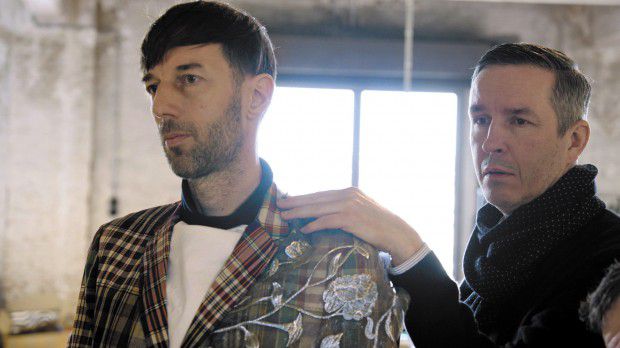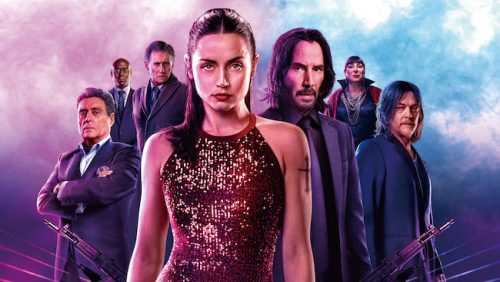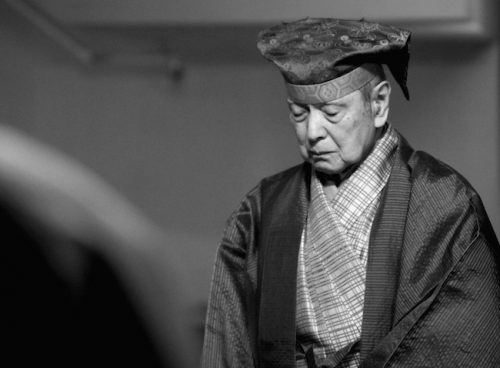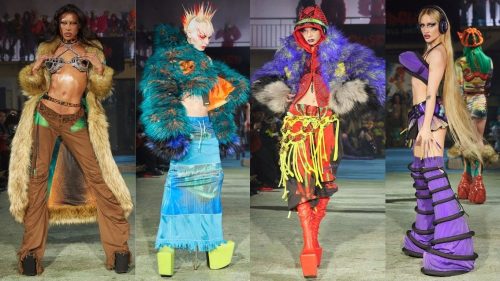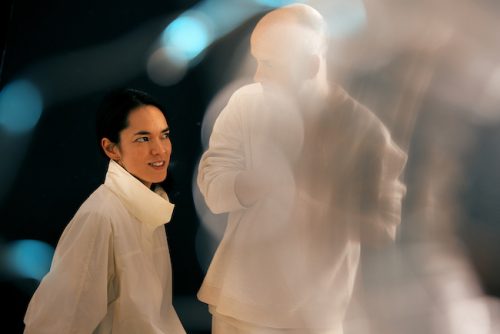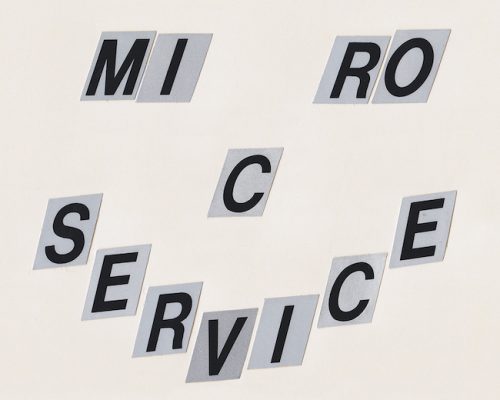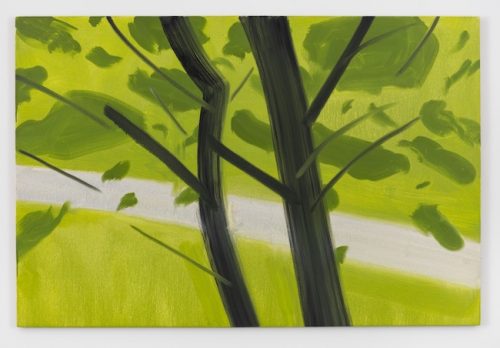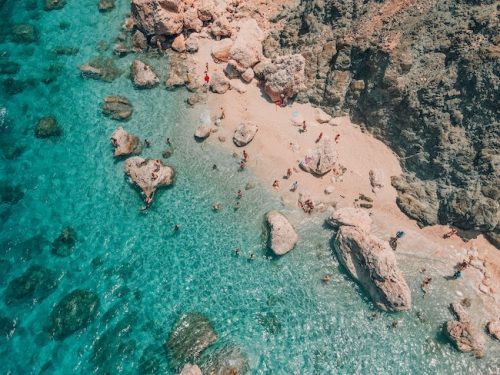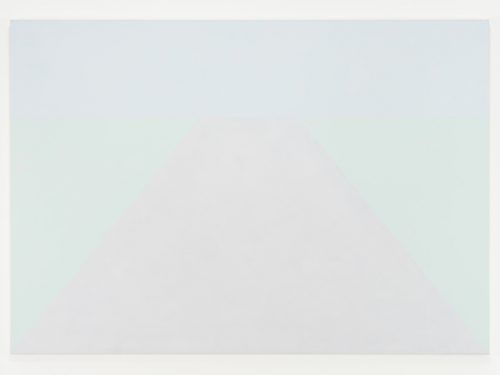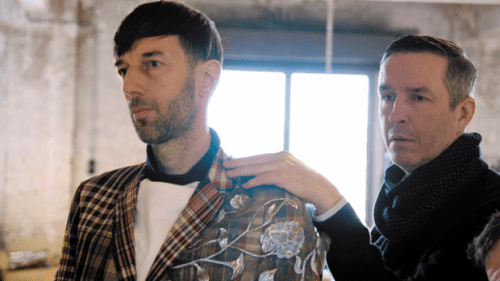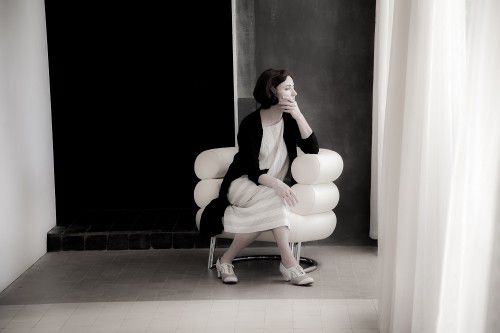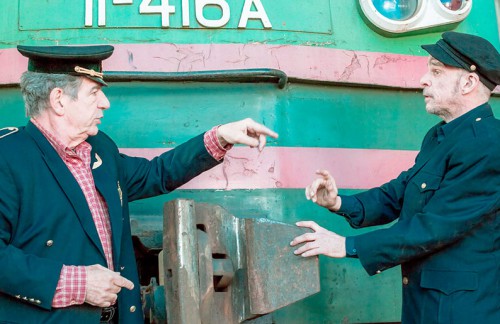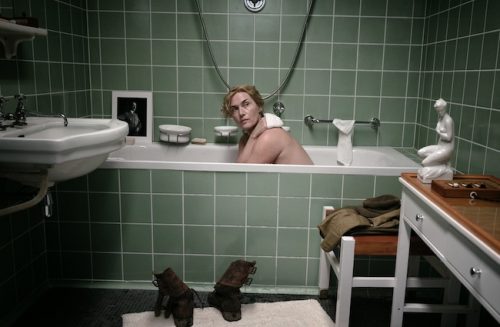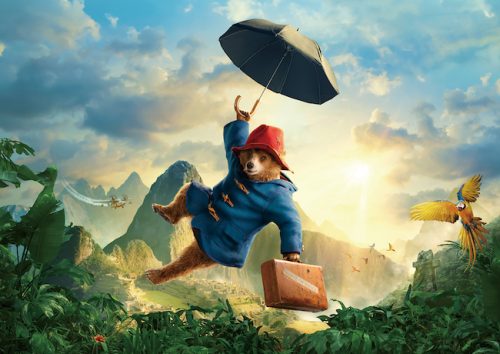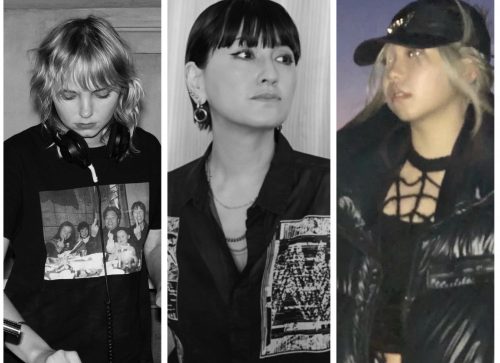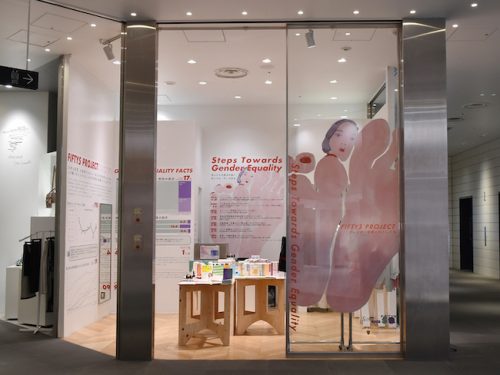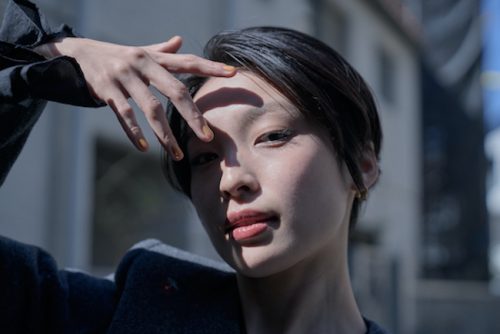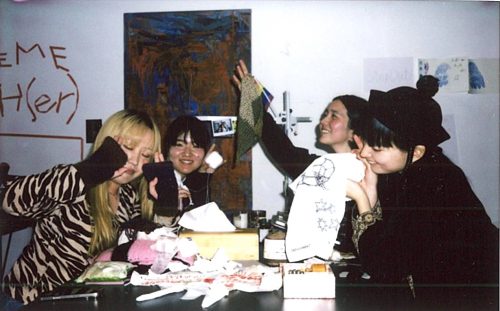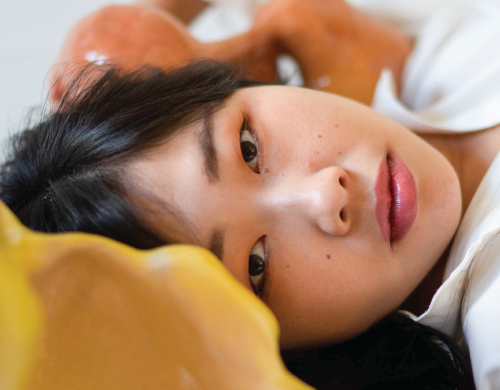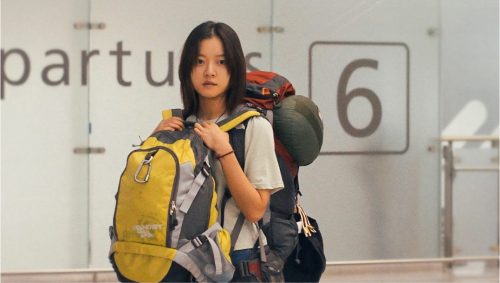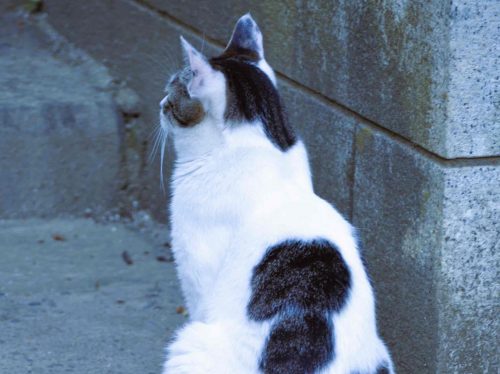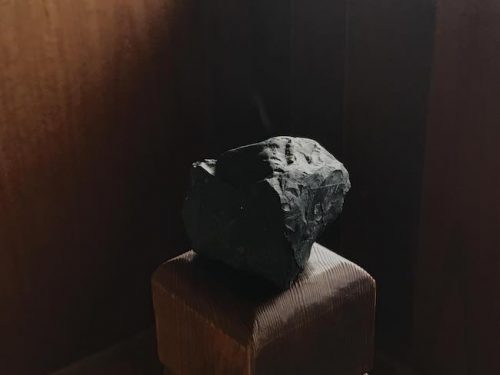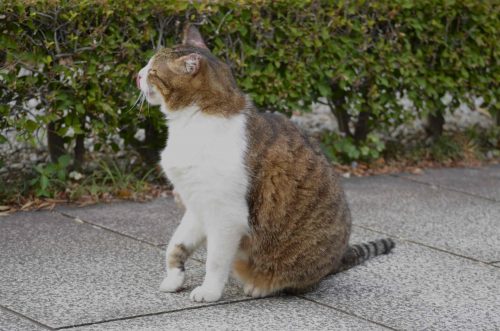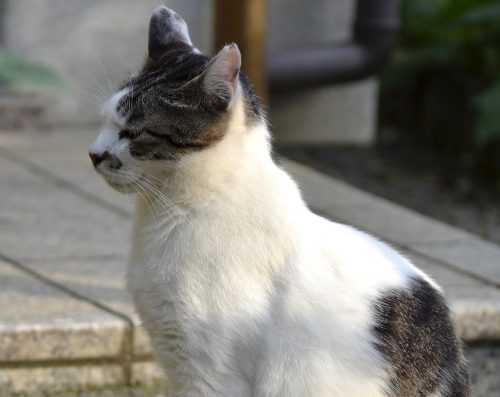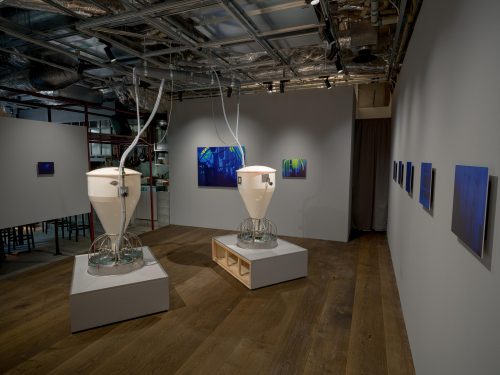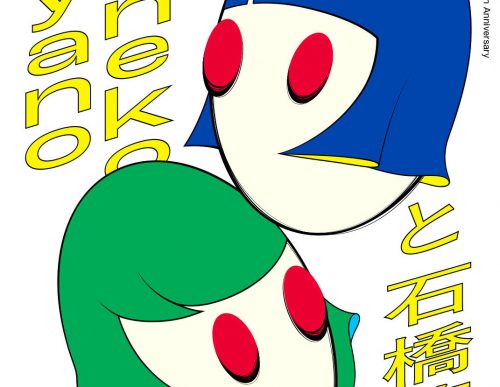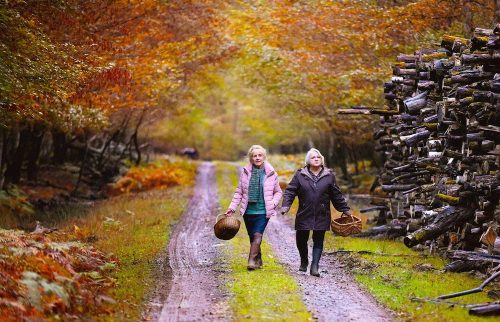アントワープ王立芸術学院を卒業した通称“アントワープの6人”の1人として、1980年代からファッション業界で大きな注目を浴びてきた孤高のファッションデザイナー、ドリス・ヴァン・ノッテン。今もなお、大企業に買収されることなく、広告も一切なしに、自己資金のみで服作りに真摯に向き合う彼の作品は、世界中のファッションアイコンやセレブリティたちからこよなく愛されている。
『ドリス・ヴァン・ノッテン ファブリックと花を愛する男』は、これまで密着取材を一切断ってきたという彼にフォーカスした初のドキュメンタリー。2014年9月にパリのグラン・パレで開催された2015春夏レディース・コレクションの舞台裏から、2016年1月にオペラ座で発表した2016/17秋冬メンズ・コレクションの本番直後までの1年間を追った貴重な作品だ。3年を費やしてドリスを説得したという、ミュンヘン在住のライナー・ホルツェマー監督にインタビューを行い、ドリスと過ごした日々について聞いた。
——ドリス・ヴァン・ノッテンのドキュメンタリーを製作する許可を得るまでに3年を要したそうですね。これまでは密着取材を断ってきたという彼を、監督はどのように説得したのでしょうか?
ライナー「ドリスと僕の間には、最初からコネクションが感じられたんだ。僕らは互いをリスペクトしていた。彼は僕の作品を観て気に入ってくれたし、僕は彼の作品に感心していた。でも、『ドリス、もし僕が君と君の作品についてのドキュメンタリーを製作したいと言ったら、どう思う?』と聞いたら、『僕はカメラの前に立つのが得意ではないし、正直言って撮影はされたくない』と言われたんだ。『すごく忙しいし、仕事に集中したい。もし撮影が入ったら気が散るし、デザインに集中することができなくなる』という説明だった。それと同時に、映画を観てもらうとわかるように、ドリスは完璧主義者で、すべてを自分でコントロールしたいタイプなんだ。彼自身もそれを認識しているから、ドキュメンタリーの製作は難しいと思ったらしい。そこで僕は、ドリスの中にあるそういった恐怖心を打ち破るべく、3年かけて自分が本当に興味を持っているということを示した」
——なるほど。
ライナー「彼はいつも『今はドキュメンタリーを作るべき時ではない、忙しすぎる』と言っていたのだが、決して『ノー』とは言わなかった。説得できるきっかけとなったのは、2014/15のシーズンにパリで行ったファッションショーだと思う。僕は彼に『もし少しでも映画を製作したいと思っているのなら、人生における大きな瞬間、つまりはこのショーを収録した方が、君にとっても幸せなのではないかな?』と伝えたんだ。そして、あのショーを撮影してテスト版を製作し、彼が気にいるかどうか試すことを提案した。僕の仕事ぶりを見てもらうことが非常に重要だと思ったからね」
——それがうまくいったわけですね。
ライナー「撮影中、僕は自分の存在感を感じさせないよう、彼らの日々の仕事を邪魔しないように努めた。4日間の撮影で僕の慎重な仕事ぶりを見てもらい、ドリスを説得することができたんだ。それに、彼は僕の作品やアプローチを気に入ってくれた。僕はファッション業界の人間ではないし、ファッション専門のフィルムメーカーでもない。ファッションのグラマラスな側面に興味はないんだ。僕にとって、本当に興味があるのは人となりと彼のアーティスティックなアプローチだけ。最終的に、そのことも重要な要因となった」
——ドリスを説得するにあたって、手紙を書いたという話は本当ですか?
ライナー「僕は手紙やメールを書いて、彼はとても私的な手書きの手紙で返事を送ってくれた。僕にとって、それは良い意味でとても感動的だったんだ。僕はオールドスクールな手法が好きでね。手紙は彼のイニシャル入りの美しい便箋に書かれていた。僕らの会話はそのようにして始まったんだ。ドリスは僕が彼についての映画を撮りたいということを光栄に思ってくれて、『忙しいから今は無理だけれど、もしかしたら将来的には……』という返事だった。そして、それが僕のモチベーションとなった。それに、彼と仕事をしている人たちから、普段だったらドリスは密着取材のオファーをすぐに断ると聞いていた。でも、僕には『ノー』とは言わず、『もしかしたら、いつか』と言ったんだ。その『もしかしたら』に3年かかったんだけどね」
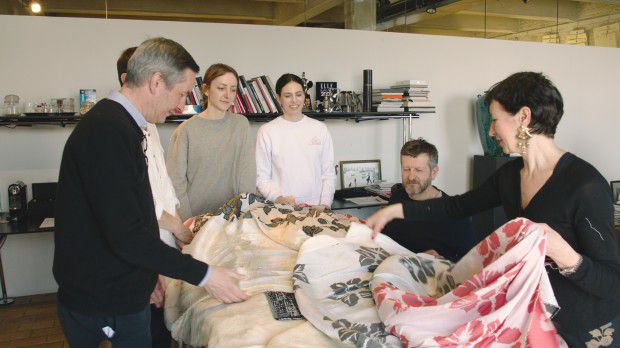
——監督がおっしゃったように、映画を観るとドリスが完璧主義者だということがよくわかります。監督はそんな彼の自宅にまで潜入して、プライベートな生活の撮影にも成功していますね。
ライナー「僕はとても慎重に撮影するんだ。最初はあまり近寄り過ぎず、カメラも自分自身で回すことにしている。それと同時に、僕は自分自身の仕事のルールで撮影することも大切にしている。撮影するときは丸一日を一緒に過ごすんだ。朝から晩まで、すべてのミーティングを最初から最後まで撮影する。そうしていると、人は僕の存在を忘れてくれるんだよ。それが唯一の方法なんだ。ドリスは本作を製作すると決断した時に、すべては彼の人生における大切なエレメントだから、そのすべてをどうにか映画に収める方法を探す必要があると話してくれた。一歩ずつ進めていき、初めてカメラが自宅に通されるまでは時間がかかったよ。実は彼に初めて会ったのは、写真家ユルゲン・テラーのドキュメンタリー『Juergen Teller』の撮影中だったのだが、当時は庭にしか入れてもらえなかった。ユルゲンでさえ、家には入れてもらえなかったんだよ。ドリスとパトリックにとって、自宅はとても大切なプライベートなスペースで、公にはしたくなかったんだ。でも、今回は違った。僕は彼がプライベートな部分もカメラに見せたいと思っていることを、すぐに感じ取った。ただし、最適なタイミングを待つ必要があって、彼はリラックスできた時に僕を招待してくれたんだ」
——それであのような映像が撮れたのですね。
ライナー「それと同時に彼は完璧主義だから、撮影前に家を整えていたみたいだよ(笑)。彼らは当初、家の中が混沌として見えるのではないか、散らかって見えるのではないかと心配していたようだ。それはスタジオでも同じだった。最初の頃は撮影に行くとすべてが整理整頓されていて、テーブルもきれいだし、人が働いているスタジオに見えなかったんだ!後になって、実は撮影が入る日は掃除をして、整理整頓していたのだと教えてくれた(笑)。映画はほとんど時系列に撮影しているから、前半はテーブルの上に何もないのだけれど、終盤は仕事が忙しくて片付ける時間がなくなっていくのがわかるよ。その方が彼らもリラックスしていて、より自然なんだ。インターネットに上がっているようなドリスの動画に比べて、僕はもっとリアリティーをとらえることができたように思う」
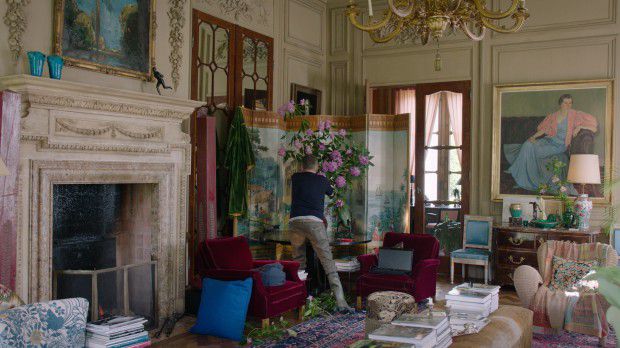
——映画の中で、ドリスさんがあまり成功しなかったコレクションについてもお話しされている様子を見て、監督との間の信頼関係を感じました。デザイナーがあまり振り返りたくないコレクションについて話すのは珍しいですよね。
ライナー「当初はドリスやパトリックも、自分たちの見せ方についてこだわりを持っていた。デザイナーがアイデアを思いつき、とてもプロフェッショナルな形でそれを実現する様子を見せるべきだと考えていたんだ。でも撮影が続くにつれて、ドリスはこの映画が現実的であるべきだと気付いたのだと思う。リアリティーを見せて、信ぴょう性のある作品にするべきだと思ったのだろう。だからこそ、彼は疲れてしまう時もあることを吐露したんだ。それはチャレンジでもあり、苦悩でもあった。最初のインタビューは2015年3月に行ったのだけれど、その時はそういった話はしていなかった。最後のインタビューは11月で、その時に話してくれたんだよ」
——そうだったんですね。
ライナー「彼はあの瞬間に、この映画の中でコレクションや失敗や間違いについて素直に話せるチャンスがあるのだと気付いたのだと思う。成功したコレクションについてだけではなく、何かを学んだコレクションについても話すべきだとね。人はそれを失敗と呼ぶかもしれないけれど、僕はそう思わない。それは学びの体験だったに過ぎないんだ。彼はそれを話すことを不安にも思っていなかったし、話すべきではないとも考えていなかった。だから、とても素直な気持ちがとらえられた。ファッション業界の人たちはとてもポジティブで熱心に話す人が多いし、すべては美しく素晴らしく、誰もがきれいであるべき…という風潮があるから、珍しいと思われるけどね。だけど、僕らはみんな人間で、そこには現実があるわけだし、良い日もあれば悪い日もある。それが人生だ」
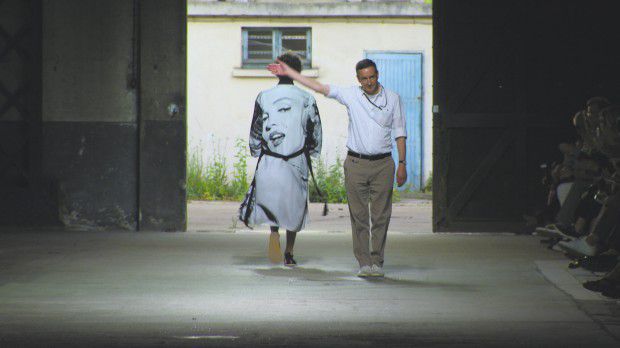
——本作では4つのコレクションの製作過程に密着しています。たくさんの映像を撮られたと思いますが、編集段階でこだわったことはありますか?
ライナー「編集は本当に大変だった。4つのコレクションに密着するというアイデアはドリスのものだったんだ。僕は1つのコレクションに密着しようと思っていて、そうすれば映画の構成が作りやすいと思っていた。アイデア出しから始めて、コレクションに対するプレスの反応までを収めるというようにね。でも、ドリスにそのアイデアを伝えたら、『もし本当に僕の仕事のエッセンスに関する映画を作りたいのなら、少なくとも1年かけて4つのコレクションに密着するべきだ。メンズ、ウィメンズ、夏、冬で僕が作るものは大きく違うから』と言われた。僕は彼に同意しつつも、これは編集において過去最大のチャレンジになるとわかっていた。コレクションを作る過程には一定のルーティンがあり、同じような構成で事が進む。観客にとって、同じことが繰り返されると退屈なものになりかねないから、難しいチャレンジだった」
——それでも彼のアイデアを採用したわけですね。
ライナー「僕は最初から4つのコレクションを映画に収めようと目標を定めて、それぞれのコレクションで異なる側面にフォーカスするようにした。それによって、繰り返しを避けることができたんだ。それと同時に、過去のコレクションを振り返るというアイデアも思いついて、とても良い構成が出来上がった。それは彼の経歴でもあるし、キャリアにおける芸術的な進化を見せることができたから、映画における重要な要素となった。最終的には200時間分の映像があって、それを90分の映画にまとめるのは大きなチャレンジだった」
——あなた自身もクリエイターですし、これまでに多くのクリエイターとお仕事されています。クリエイターとして、ご自身の考え方はどのように養われたと思いますか?
ライナー「人生において、自分の中に特定のクリエイティブな部分を発見する瞬間というものがある。一度発見したら、あとは勇気を出して、思い切ってその部分を見せるんだ。最初は他の人の反応を見て、とてもがっかりするかもしれない。自分の考えと相手の考えが合わなかったり、自分が良いと思ったものが良いと思われなかったりして、傷つくこともあるだろう。たとえばコマーシャルやテレビのニュースの仕事だと、クライアントから特定の方向性を強いられることが多々ある。『これはアートではないのだから、私たちが求めていることをしてくれ』とね。そこで重要なのが、そういったプロセスを経てもなお、自分のスタイルやヴィジョンを忘れないということ。自分の視点を認識して、決して失わないこと。大変なことだし、時間もかかるし、たくさんの労力もかかるだろう」
——それはドリスからも感じられましたか?
ライナー「ドリスの場合も同じだと思う。あまり成功しなかったコレクションの時は、とても辛かったはずだ。でも、自分のやりたいことをやり通す勇気が必要なんだ。ドリスと僕自身にとって、とても大切なのは独立心だ。僕らはそういった意味でよく似ている。僕はフリーランスだし、個人で仕事をしている。ドリスは大きな会社を持っているけど、それは彼の会社だ。CEOが『売れるから今年は全部ブルーにしてくれ』というような大企業に属している彼なんて想像もつかないよ。彼はそういった形では動かないんだ。僕にとっても同じだよ。僕は独立している必要がある。たくさん稼げるコマーシャルは、自分自身のプロジェクトを実現するために引き受けるんだ。独立心こそが、最も重要なことかもしれないね」
——デザイナーとしてはもちろん、本作で描かれた1人の人としてのドリスの旅は素晴らしいものでした。彼と過ごした日々の中で、監督が得た最大のインスピレーションは何ですか?
ライナー「これまでたくさんのクリエイティブな人々と仕事をしてきて、ドリスと他のアーティスト、それに自分自身の間には多くの共通点を見出してきた。ドリスに関して特に印象に残ったのは、彼が決して妥協しないということ。ほとんどの人は妥協しないけれど、ある時点まで来ると、『ベストを尽くしたし、映画も完成したから、これで公開しよう』ということになる。ドリスについては、常に最後の最後まで妥協しない人だと感じていた。ショーの直前の1秒まで妥協しないんだ。彼は常に最高の結果を得ようとしていた。ドリスのあのような姿勢は、これまでに見たことのないものだった。今後は僕も、もう少し妥協しないようになるかもしれないね(笑)」
interview & text Nao Machida
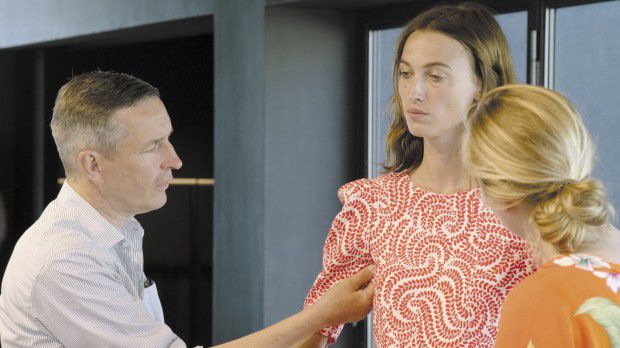
– We heard that it took you three years to convince Dries to make this documentary. How did it happen?
I think first of all, there was a connection between him and myself. We respected each other. He saw my films and liked them. And I admired his work, so there was a lot of respect from the beginning. When I asked him “Dries, what do you think about me shooting documentary about you and your work?” he said “I’m not a person who is good in front of camera, and I don’t like to be filmed to be honest. He said “I’m so busy and I have to concentrate on my work. I’m afraid if you would film me it would distract me with my work, and I can’t focus on my designs any more.” And also at the same time, he’s a perfectionist, and is also a little bit of a control freak. He is aware of that, so he thought it would be a challenge. So I tried to destroy that fear in Dries, and tried to show him that I was really interested in three years.
– I see.
He was always saying, “It’s not the right moment, I’m too busy”, but he never said “no.” I think what really convinced him was he had this exhibition in Paris in 2014/15, and I said “If you ever want to make a film, I think you would be happy to have that big moment in your life – that exhibition in the film.” So I suggested to make a test and shoot that exhibition, and then he decide if we go on or not. Because I thought it was very important for him to see how I work.
– How did it work?
I want to be a fly on the wall, try not to disturb your daily operation. I shoot him for four days and he saw how discreet I work and that convinced him as you see the film. Also, he liked my films and my approach, and I’m not from the fashion world, I’m not a fashion film maker. I’m not interested in glamorous aspect of fashion. I’m really interested in the person and his artistic approach, that was also very important in the end.
– Is that true that you wrote him letters to convince him?
I wrote him letters and e-mails, and he wrote very personal handwritten letters. And to me it was very touching in the positive sense. It’s very old school and I like it very much. It was written on a piece of very beautiful paper with his initials. And that’s how our conversation started. He felt very honored about the fact that I was interested in making a film about him, but he wasn’t able to do it then because he was so busy, but he might come back to my approach. And that really motivated me to go on. And I knew from other people who work with him that normally he would turn down the approach by filmmakers immediately. But to me he never said no, but “maybe one day,” but that “maybe” took three years.
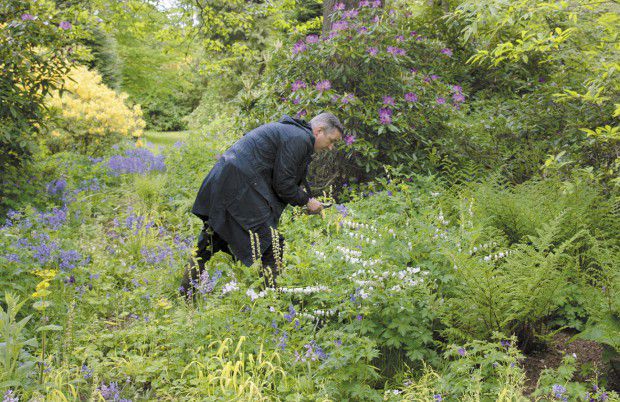
– Through the film we can see he is perfectionist as you mentioned. But you even went to his house and show us his private life as well.
I shoot in a very discreet way. In the beginning, I don’t get too close, and I always operate the camera myself. At the same time, it was very important that I was shooting by general rules of my work. When I shoot, I really spend a day with them. I shoot from morning until evening, each meeting from the beginning to the end. So this makes people forget about my presence. That’s the only way how it works. Once Dries made the decision to make this film, he said everything was very important element of his life, so we had to find a way to put those elements that are essential in his life in the film. And one step after another, it took a long time until he invited me with the camera to his house for the first time. I remember when I first met him, I was shooting the documentary on Jurgen Teller, and it was in his garden. But at the time, I wasn’t allowed to enter the house. Jurgen wasn’t allowed to enter the house. He felt that was too private. It was very important private space for Dries and Patrick. They wanted to keep it private and not to make it public. But this time, it was different. I immediately felt he wanted to show that part of his life to the camera. But I had to wait for the right moment. When he felt relaxed, he invited me.
– And that’s how you got that footage.
Also at the same time, he’s perfectionist, so I think he prepared the house a little bit for the camera [laughs]. In the beginning they were afraid it might look too chaotic, not well-organized, not clean enough. The same thing happened in the studio in the beginning. I was always surprised when I went with my camera in the beginning, that everything was well organized and the tables were clean… it didn’t look like a studio where people work! Later they told me that each time they knew when I was coming, they cleaned all up and organized well [laughs]. You see it in the film, because most of the shooting was in the chronological order. At the beginning, there is nothing on the table, but at the end of the film, they could not clean each time any more because they had to do their work, so it’s different. And they are more relaxed and normal. I think I was able to show more reality than other movies about Dries you see on the Internet.
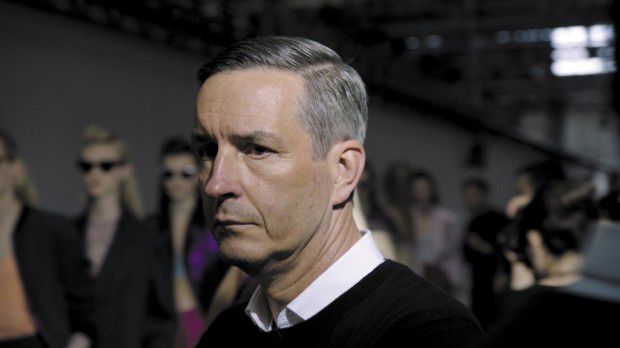
– I could see how much he trusted you when he talked about his not so successful collections. You don’t see too many designers talking about the collections they don’t want to look back on.
I think in the beginning, Dries and Patrick had the idea of showing themselves in a certain way. In the way that designers have an idea and they realize that idea in a very professional way. But longer we were filming, I think Dries realized the film has to be realistic, it has to show reality, and it has to be authentic. And that’s when we did this interview when he was talking about being exhausted sometimes. That was a challenge and also a suffering. I think he has never talked about that in the first interview we did in March 2015. The last one when he talked about exhaustion was in November.
– I see.
I think he really realized at that certain moment that there is a chance in that film to talk very honest about collections, about failures and mistakes made. Not only talking about successful collections that he made, but about the collections he learned something from. People might call it a mistake but I wouldn’t even call it a mistake. It was just a learning experience. He never felt insecure about it or he shouldn’t talk about it. So it was very honest. But many people find it so extraordinary because people in the fashion world tend to speak very positive and enthusiastic, and everything is beautiful and wonderful, everybody looks good… But we are all human beings, so there is a reality behind it, because we have good days and bad days. That’s life.
– You followed four collections, so I imagine you were left with so much footage. How did you decide to edit this film?
It was really difficult. The idea to follow four collections in the film came from Dries. It was really interesting because once he decided to make this film with me, my basic idea was to follow one collection. Then, you have a structure for the film. You start with the initial idea and maybe show the reactions of the press on the collection. But when I told that idea to Dries, he said “if you really want to make a film about the essence of my work, you have to follow at least four shows over the period of a year. Because it’s so different what I make for men, women, summer and winter.” I agreed on that knowing at the same time this would be the biggest challenge for me to edit. Because making a collection, there is a certain routine, and it follows the same structure. Repeating the structure could be very boring for the audience. That was a tough challenge.
– But you still accepted Dries’ idea.
I had the aim from the beginning to try to have four collections in the film, I always focused on a different aspect in each collection. That saved me from repeating too many things. Then at the same time, I came up with the idea to look back on old collections and that gave me a very good structure. That was the biographical dimension and artistic evolvement or development in his career that gave one important structure for the film. In the end, we had 200 hours of footage and it was a big challenge to make it into a 90-minute film.

– You are a creator yourself, and you also have been working with many creators in your career. How do you think you gained your own way of thinking in your life?
There is a certain moment when you discover you have a certain creative element in your life. And then it’s about developing the courage that you show this element, that you dare to show it to the public. The first moment can be very disappointing when you see other people’s reaction. It might hurt your feelings about what you thought against what other people thought, about something that you like and people don’t like. For example, when you are shooting for other people making commercials or TV news, they always try to push you into a certain direction. They would say, “it’s not art that you do, you have to do what we expect from you.” And this is very important that during those processes, you don’t forget about your own style or own vision, and that you acknowledge your own view, and you never lose it. It’s tough and time consuming, and it costs you a lot of energy.
– Did you feel that from Dries as well?
I think it’s the same with Dries. There was a lot of suffering on his less successful collection. But you need courage to do your own thing. What is very important for Dries and also for myself is independence. We are very similar in that way. I’m freelance and I work on my own. Dries has a big company but it’s his company. And I can’t imagine him being in some luxury company where CEO would tell him “this year, we do all in blue, because it sells well.” He wouldn’t function in that way. It’s the same for me. I have to be independent. I do commercial work with a lot money to support my own projects. So independence may be the most important thing.
– It was really amazing to see Dries’ journey as a creator but also as a person. What was the biggest inspiration you got through working with him?
I’ve been working with so many people who are very creative and successful. And I discover a lot of similarities within Dries and other artists and myself. What I really liked about Dries was that he never compromise. Most of the people wouldn’t compromise, but at a certain moment, you say “OK, you did your best. The film is finished. Let’s give it to the public. Let’s go for it.” With Dries, I always had a feeling that he wouldn’t compromise until the very end. Until the very last second before the show. He always try to get the best result. And that’s something I haven’t seen in such a way as I saw it with Dries. Maybe I can be little bit less compromising as well [laughs].
interview & text Nao Machida
『ドリス・ヴァン・ノッテン ファブリックと花を愛する男』
2018年1月13日、ヒューマントラストシネマ有楽町、新宿武蔵野館ほか全国順次ロードショー
孤高のファッションデザイナー”ドリス・ヴァン・ノッテン”、彼の創作の謎に迫る。ニコール・キッドマン、ミシェル・オバマ前大統領夫人、そしてアイリス・アプフェルなど、世界のセレブリティやファッション・アイコンが愛して止まないファッションデザイナー“ドリス・ヴァン・ノッテン”。本作は、これまで殺到する密着取材を断ってきた孤高の天才デザイナー、ドリス本人に迫る初のドキュメンタリー映画です。美しいものを愛し、スキャンダルとは無縁で、何事にも全力で取り組む完璧主義者の彼がのぞかせた意外な素顔とは―。
公式サイト:http://dries-movie.com/
【監督】ライナー・ホルツェマー『マグナム・フォト 世界を変える写真家たち』
【音楽】コリン・グリーンウッド(レディオヘッド)
【出演】ドリス・ヴァン・ノッテン、アイリス・アプフェル、スージー・メンケス
2016/ドイツ・ベルギー/ドイツ語/カラー/ビスタ/93分/日本語字幕:古田由紀子 <G> 配給:アルバトロス・フィルム
© 2016 Reiner Holxemer Film – RTBF – Aminata bvba – BR – ARTE
ライナー・ホルツェマー
ドイツ語圏のドキュメンタリー界を牽引するベテラン作家。1958年、ドイツ・ゲミュンデン生まれ。1982年にはHessian TV Awardにおいてドキュメンタリー作品『Wer sich nicht wehrt…』で最優秀新人監督賞を受賞。ドイツで初めてエイズ患者と公表した人物に密着した『I Am Still Alive』(1986・未)が連邦家庭・高齢者・女性・青少年省から表彰されたり、アウシュビッツに強制収容されたロマ族に光を当てた『Verfolgt und vergessen』(1985・未)が海外の映画祭に招待されるなど高く評価され、これまでに長編、短編を合わせ30本以上の作品を発表してきた。日本でも2007年に『マグナム・フォト 世界を変える写真家たち』(1999)が公開されている。 ドリス・ヴァン・ノッテンとの出会いは写真家ユルゲン・テラーのドキュメンタリー『Juergen Teller』(2012・未)の撮影中。その時から3年がかりでドリスを説得し、本作の撮影に至った。
